Paula Pederson's Blog, page 3
August 2, 2018
Family Cemeteries in Maine and Denmark
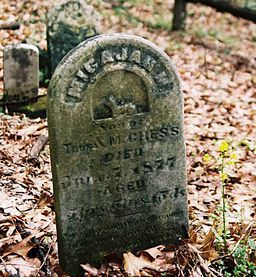
Chess family Headstone Courtesy Wikimedia Commons
The rural Maine town that anchors my lifelong summers marked its 200th anniversary in 2014. A tour of private cemeteries was offered during the celebration.
For years I’d noticed cracked and toppled headstones along the sides of country roads. Deeper in the woods on hikes, I’d see clusters of graves, marked by head and foot stones, small and large, their descriptions worn by time to unreadable bumps. An enclosure of boulders, or a spiked iron fence bordered these family graveyards.
Today these rusting iron fences are disappearing due to high prices for scrap iron.
20th century hunters stalking moose, deer, or wild turkey would come across these small cemeteries at the edges of abandoned farms that have today been reclaimed by forests. Local conservators cleared the sites and deciphered names and dates on the old stones. Volunteer historians researched old deeds. Schoolchildren studying town history cleared weeds and bushes and marked with cairns these people-sized scoops left in the earth.
Rows of small headstones showed that some disease had felled the children with lightning speed. Away in a corner of the property might be the solitary grave of the family black sheep—banished from the clan’s burying ground. One striking example is a headstone at the edge of the town’s main road. The government-issue flag beside the military monument announces that a Civil War veteran lies buried here. While his family may have ostracized him in death, the location they chose subjects him today to the roar of traffic passing along the blacktop.
“How ghoulish,” I thought when I signed up for the tour. Instead I joined a poignant walk through 200 years of history and gained new respect for a town whose people honor their forebears.
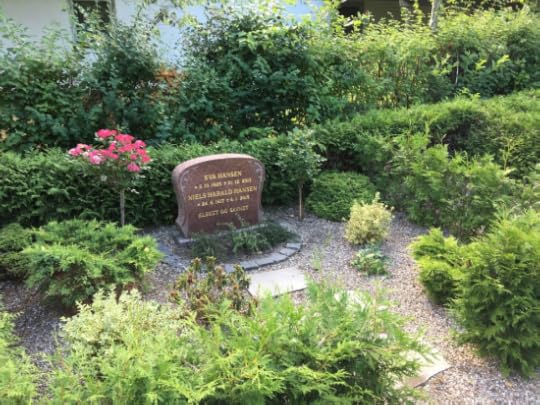
four years later I’ve been able to pay my respects to my own father on a recent trip to Denmark. Hans Pederson was raised in the village of Stenstrup before he became a pioneer U.S. immigrant in 1884. He went on to become the noted Northwestern contractor I’ve written about in my recent memoir, The Mysterious Builder of Seattle Landmarks, Searching for My Father.
With my newfound family, I visited the church where my father was christened and the parish cemetery where his family is buried. Instead of single headstones, each rural Danish family had its own little garden walled in by a low hedge. Well-tended flower gardens lie within the hedge, a touch that give each plot the sense of being an ancestral home.
July 26, 2018
Johnny Appleseed, Pioneer
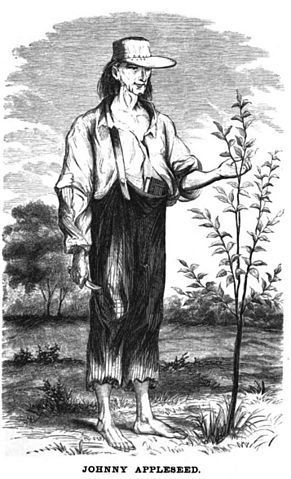
Courtesy Wikimedia Commons
John Chapman 1874-1845, better known as Johnny Appleseed, is revered for sowing random apple seeds along the midwestern frontier that sprouted and grew into apple orchards during the years that American immigrants settled into communities.
His kindness to animals and insects was legendary. Once when mosquitos flew into his forest campfire and burned, he filled his cap with water and extinguished the fire with the remark, “God forbid that I should build a fire for my comfort that should be the means of destroying any of His creatures.”
Actually, Johnny Appleseed’s, or John Chapman’s seeds came not from edible apples, but from a variety too sour for eating, that instead fermented into hard cider.
Johnny planted his seeds in well-supervised nurseries tended by farmers. He then returned periodically to watch them mature into orchards. Michael Pollan writes in The Botany of Desire that “Far from becoming the American Saint Francis, John Chapman turned out to be the American Dionysus. No wonder everyone was glad to see him coming down the western roads! ‘The reason people … wanted John Chapman to stay and plant a nursery was the same reason he would soon be welcome in every cabin in Ohio. … Johnny Appleseed was bringing the gift of alcohol to the frontier.”
With no mention of Chapman’s hard-drinking heritage, a museum at Urbana University was founded on the belief that “those who have the opportunity to study the life of Johnny Appleseed will share his appreciation of education, our country, the environment, peace, moral integrity, and leadership.”
Small and sour apples grown from seeds are called “spitters.” Sour enough, Henry David Thoreau wrote to “Set a squirrel on edge and make a jay scream.” The Legend of Johnny Appleseed is a segment of Melody Time, a 1948 Walt Disney movie. Statues, festivals, and citations abound throughout the midwest to honor Appleseed. The U.S. Postal service issued a 5 cent Johnny Appleseed stamp.
So do legends get born.
Courtesy Delancey Place.com, 4/12/18, Drinking in America: Our Secret History by Susan Cheever; Wikimedia Commons
July 20, 2018
Hans Pedersen – Seattles Bygmester #1
I just reblogged my Danish blogging friend Henry Hogh’s post about my father, but this is the way it came out. A photo but not the wonderful story of my father’s childhood in Stenstrup Denmark before he emigrated to Seattle and became a builder.. Henry, a genealogist, learned more about my family roots than I did myself even though I visited Stenstrup myself in June. I haven’t posted much yet since my return. Don’t give up on me friends, we’re having family medical challenges this summer.
English speaking – use the translate button
Maria skrev i sin blog om sin Fars onkel Valdemar, der havde udvandret til USA og bosat sig i Seattle. Hun fik respons fra Paula, der søgte oplysninger om sin Far Hans Pedersen i Seattle, som døde da hun var en måned. Hans Pedersen havde som bygmester været med til at grundlægge Seattle. Paula viste ikke meget om sin fars danske oprindelse, kun at han kom fra Stenstrup ved Svendborg. Jeg var netop kommet godt i gang og blevet grebet af slægtsforskningen. Jeg mente da nok jeg kunne finde ud af et og andet om den danske forbindelse.

Paula er Juni 2016 ved at lægge sidste hånd på sin bog om sin Far. Jeg har her ”lånt” bogens forside.
Paula har nu Marts 2017 fået sin bog om Faderen udgivet se link her. Bogen kan iøvrigt købes på Amazon.co.uk.
View original post 1,471 more words
July 12, 2018
Rockweed from Maine’s Rocks
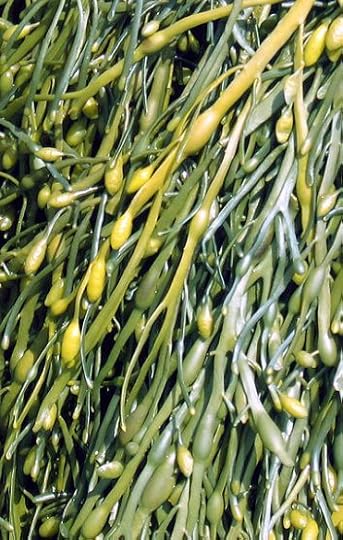
Rockweed, courtesy of Wikimedia Commons
A grinding sound awakens me before daybreak in Maine.With too many fish being taken from the ocean, some fishermen have turned to harvesting seaweed off of Maine’s rocks and ledges as a part of the state’s emerging aquaculture industry.
Sarah Redmond, Extension Associate at the Maine Sea Grant College Program, told us that Maine is home to some of the world’s most beautiful and versatile seaweeds, also known as sea vegetables, ocean herbs, sea plants, and marine macro algae. Seaweeds are used for food, extracts, beauty and health products. They are a valuable source of essential minerals and vitamins.
Leave the harvesting to the fishermen, and instead, try a bag of dried seaweed from the health food store where you can also purchase nori, kelp, or kombu. Sarah Redmond suggests some easy things to do with seaweed.
• blanch rockweed tips, add to pizza, rice, or salad
• simmer and use for a nutritious broth
• simmer to soften, add sesame oil, vinegar, and soy sauce. Marinate and add to salad with carrots, lettuce, tomatoes, avocado
• Try a seaweed and cucumber salad. Top with sesame seeds
So try some seaweed, and congratulate yourself for swallowing more calcium than broccoli along with the omega 3s you’ll find in avocados as well as some Vitamin B-12.
July 5, 2018
Hans Pederson in Denmark 2
No photos this week either. I can’t seem to handle them out of the US.
We Americans are always searching for our roots and I’m in the middle of finding mine. I’m spending six days in Denmark, enchanted by the country North, South, East, and West, now that opportunity has finally knocked not only to see my father, Hans Pederson’s country, but also meet descendents of his mother, I won’t even guess when she died—he died at 67 in 1933 a month after I was born.
Publishing my 2017 memoir, Mysterious Builder of Seattle Landmarks: Searching for My Father put me in touch with the half- brothers he set up as dairy farmers North of Seattle in Snohomish WA. I haven’t met their progeny yet, but they keep up with the Danish cousins, and this week I’ve met them. in Denmark from Copenhagen-Funen-Odense-Svendborg, they drove Ellen and me to Hans birthplace in Stenstrup. We found the house where his grandparents raised him since his mother had to return to her job as a maid shortly after he was born. Christened at the Stenstrup church, he started at a laborers’ school when he was seven, and went twice a week until he was fourteen. 140 years later we trudged up many flights of the Bregnigne Church stairs to the tower where Hans was hit with wanderlust as he watched the train rumble away from Funen Isle to the wide world..
Our Hansen family entertained us royally thanks to cousins Dorte and Hanne. we met their kids and grandkids too. Then they chauffeured us from our hotel to their homes for feasts at lunch and dinner, a strawberry dessert ,and coffee and to meet their farmer brother for an afternoon drink as we watched the soccer finals. He explained that the thatched roofed houses with their perfectly mowed haircuts, required permission from the government. They must be maintainedThe special straw comes from Poland.
My father Hans Pederson left Denmark (Stenstrup-Svendborg-Odense on the island of Fyn) as soon as he was released from the Prussian army at 19and emigrated to the US, finally arriving in Seattle in 1884 at the age of 20. He settled there in the right place at the right time and built a life as a successful builder—roads, bridges, dams, and apartment houses.
June 28, 2018
Hans Pederson in Denmark
I just won’t get to this blog this week. I just arrived in Copenhagen with my daughter and we’ve checked into a Viking cruise. This one features Denmark so I’ve mostly come to learn about my father, Hans Pederson’s long-ago Danish childhood before he became a Seattle immigrant and builder. We’ve just raced around this city on a walking tour and an afternoon in the Danish National Museum and I’ve put my tired feet up. see you next week!
June 21, 2018
Environment-care Then and Now
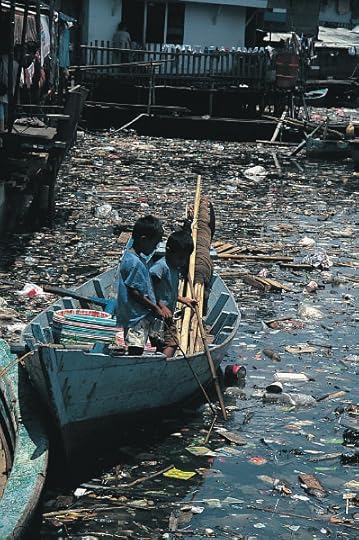
Minimato Bay, Japan Courtesy Wikimedia creative commons. Attribution Stephen Codrington
My Danish father Hans Pederson’s primary concern was survival when he first settled in Seattle. An early 20th century immigrant surrounded by forests, he soon became a pioneer builder who joined the local blasters, loggers, farmers, and earth-movers as they built their futures. They also built a Northwestern metropolis that has never stopped growing..
Today people have populated the earth’s virgin forests, mountains, plains and coasts. Dead Zones in the Ocean: Delanceyplace.com’s 6/13/18 blog features a selection from The Ends of the World by Peter Brannen that cries out for change.
“Every summer in the Gulf of Mexico, an area of the ocean up to the size of New Jersey loses it’s oxygen and almost everything in it dies…Lake Erie saw the arrival of a toxic algae bloom so large in 2014 that it shut down the drinking supply for the city of Toledo. In 2016 the coast of Florida was battered by waves of thick sea-life smothering algal muck; boat owners described it as having the consistency of guacamole. The same kind of problems afflict the greatly impoverished Chesapeake Bay which up until relatively recently was a biological paradise….
“Farther afield, oxygen-poor waters beset the Baltic and East China Seas. This deadly phenomenon — runaway algae growth robbing the seas of oxygen— is called eutrophication — caused by too much of a good thing — an overdose of plant food….Then that accumulated Miracle-Gro spurs explosive algae growth in the open ocean. When the algae blooms die en masse, they sink and decompose, a process that uses up most of the oxygen…
“ Without oxygen, everything else suffocates, and the result is massive fish kills that make themselves known to Gulf Coast beachgoers in yearly biblical tides of lifeless stingrays, flounder, shrimp, eels, and fish. Underwater dead crabs, clams, and burrowing worms litter the seabed like casualties of an invertebrate Battle of the Somme. …these algae blooms and dead zones around the world are spreading, driven by development and the growth of industrial agriculture.
In Maine we now bring our own bags to the grocery—a long-established practice in Europe. We recycle beverage containers, (I just bought a purse made of plastic bottles), and I’ve stopped using straws. Still, Amerians are trashy and wasteful.
June 14, 2018
400 Years in Maine
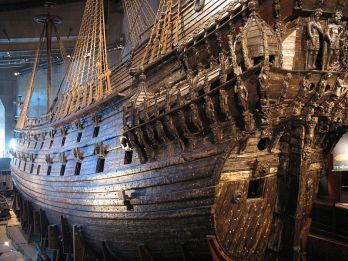
Photo Credit; Wikimedia Creative Commons, Attribution Peter Isotalo
Virginia celebrated it’s 400th anniversary in 2007 with a visit from Queen Elizabeth. But I doubt that she even knew about the first Virginia Colony in Popham Beach Maine. Back then Virginia stretched from Canada in the North to today’s Virginia in the South. But those Yankee Virginians didn’t stay long,
Those pioneers built a ship, the Virginia, not nearly as nice as the one above, and sailed back to England. Everyone forgot about them. They existed only by rumor until someone discovered a map of the grounds in 1994. They began an archeological dig and unearthed proof of the Popham colony.
So after that, they ignored the snub from Queen Elizabeth and put on their own 400th anniversary celebration on the beach.
June 7, 2018
Pioneer Klondike Prospectors
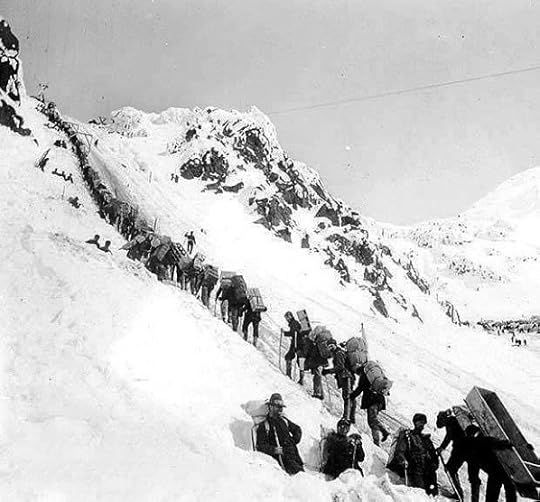
Prospectors Ascending the Chilkoot Pass Steps courtesy Wikimedia Commons George Cantwell photo
I looked up two words that conjure up adventure and risk. ELDORADO, a place of vast riches and adventure. BONANZA, something yielding a rich return. Wherever these words actually originated, creeks along Alaska’s Yukon River appropriated them before the Klondike Gold Rush of 1897 where early gold-seekers staked their claims. My father Hans Pederson joined the Klondike stampede which numbered 40,000 and may have reached 100,000 by 1898.
Prospectors crossed from Alaska to the Canadian border once they had reached the summit of the White or the Chilkoot Pass. At the border, the Canadian Mounted Police by enforcedthe “One Year Rule,” It required stampeders to demonstrate to the Mounties that they had brought one year of supplies with them. This Canadian law probably averted famine
Klondikers generally had a partner. You can see why in the photo. Picture them mounting those 1500 steps that were eventually carved into the ice along the Chilkoot Pass. Imagine how many trips they took to bring their year of supplies up those 1500 steps. Imagine sliding off those icy steps into 60 feet of snow. You had better have a partner to drag you back to the path. Everyone else needed their strength to survive.
Hans Pederson’s partner deserted him when Hans got pneumonia at their Yukon camp in Dawson City. Hans’ partner left him for dead, boarded another ship home, and drowned when his ship sank. Hans’ made it back to Seattle — possibly down those same aChilkoot steps that thawed into the brief summer.
Heans spent the next 35 years in Seattle building roads, bridges, apartments, schools and dams. I was born to his second wife, my mother, a month before he died. I wish I could have asked him about the Chilkoot Pass along with his other adventures in Eldorado, Bonanza, and pioneer Seattle.
May 31, 2018
A Beach Holiday
Memorial Day is a good day to head head for the beach if you want to be in the thick of things. As writer Thorton Wilder put it, “There’s nothing like eavesdropping to show you that the world outside your head is different from the world inside your head.”

Boracay Beach and tourists Courtesy Wikimedia Commons

boy playing in sand on beach Courtesy Wikimedia commons
Some of us would rather just be left alone with our creations.

family fun at the beach courtesy Wikimedia Commons
This could be scary.
Oh well, one way or another, every now and then we’re all ready for a day off. I like to tramp along peaceful Maine beaches.

A Maine beach sunset




